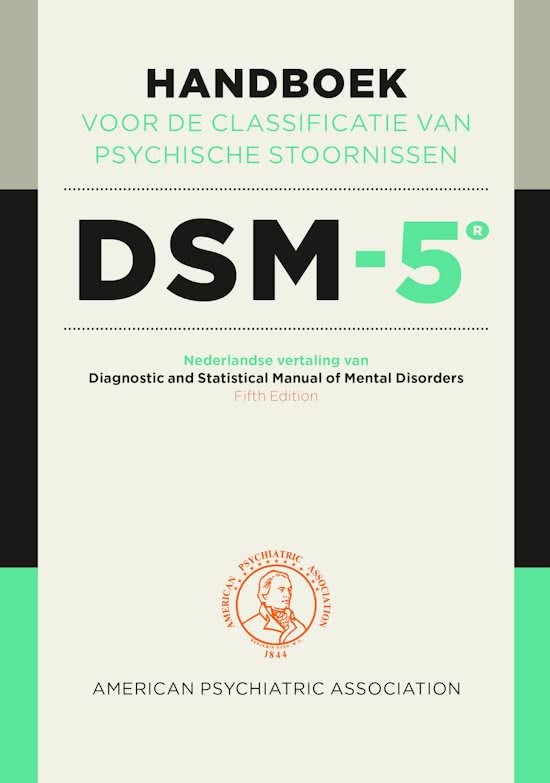4.2. Personality Disorders
Master Psychology
________________________________________________________________
, Theme 4. What are your pronouns?
Sources
DSM-5 (2013) – Gender Dysphoria
De Vries et al. (2012)
Steensma et al. (2013)
Zucker et al. (2016)
DSM-5; Gender Dysphoria
Gender Dysphoria
- Sex and sexual refer to biological indicators of male and female, such as in sex
chromosomes, gonads, sex hormones, and non-ambiguous internal and external genitalia.
- Disorders of sex development denote conditions of inborn somatic deviations of the
reproductive tract from the norm and/or discrepancies among the biological indicators of
male and female.
- Cross-sex hormone treatment denote the use of feminizing hormones in an individual
assigned male at birth based on traditional biological indicators or the use of masculinizing
hormones in an individual assigned female at birth.
- Gender is used to denote the public (and usually legally recognized) lived role as boy or girl,
man or woman, but biological factors are contributing, in interaction with social and
psychological factors, to gender development.
- Gender assignment refers to the initial assignment as male or female, usually at birth.
- Gender-atypical refers to somatic features or behaviors that are not typical (in a statistical
sense) of individuals with the same assigned gender in a given society and historical era.
- For behavior, gender-nonconforming is another term.
- Gender reassignment denotes an official change of gender.
- Gender identity is a category of social identity and refers to an individual’s identification as
male, female, or some other category other than male or female.
- Gender dysphoria refers to an individual’s affective/cognitive discontent with the assigned
gender but is more specifically defined when used as a diagnostic category.
- Transgender refers to the broad spectrum of individuals who transiently or persistently
identify with a gender different from their natal gender.
- Transsexual denotes an individual who seeks, or has undergone, a social transition from
male to female or female to male, which in many, but not all, cases also involves a somatic
transition by cross-sex hormone treatment and genital surgery (sex reassignment surgery).
- Gender dysphoria refers to the distress that accompanies the incongruence between one’s
experienced or expressed gender and one’s assigned gender.
- More descriptive term than the DSM-4 term gender identity disorder, and focuses on
dysphoria as the clinical problem, not identity per se.
, Gender Dysphoria






